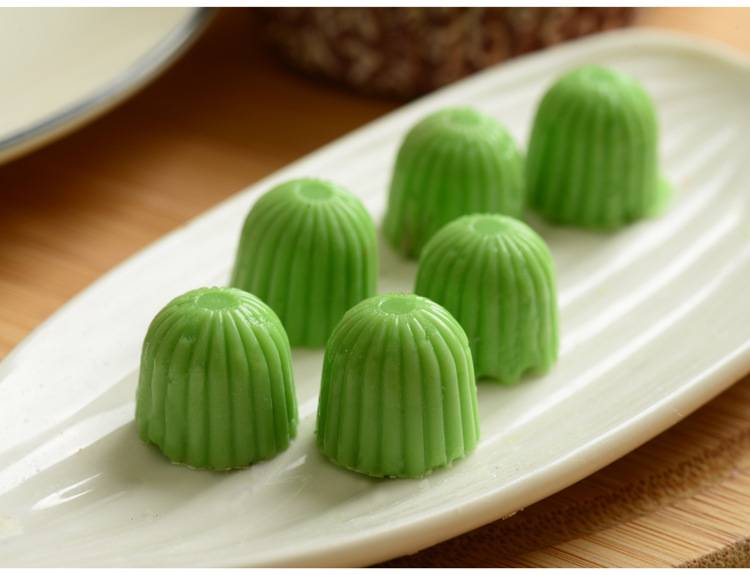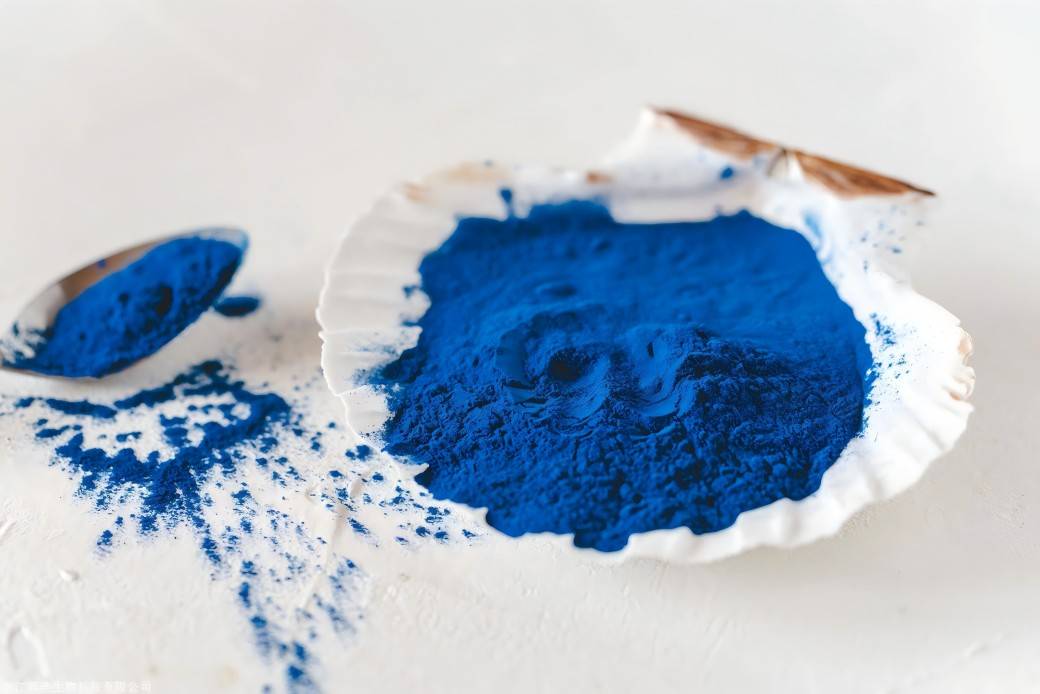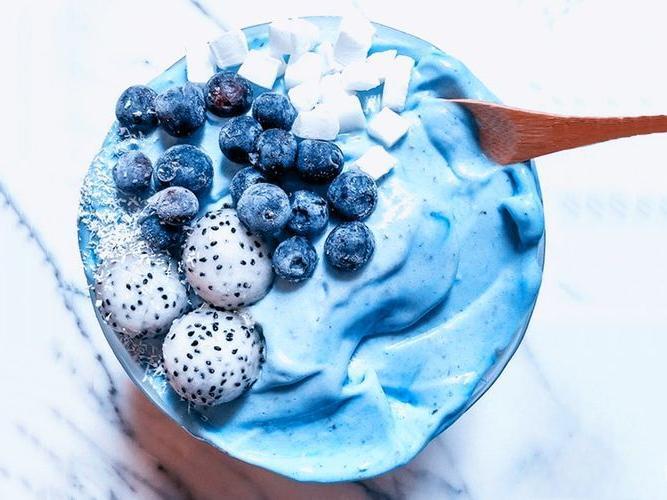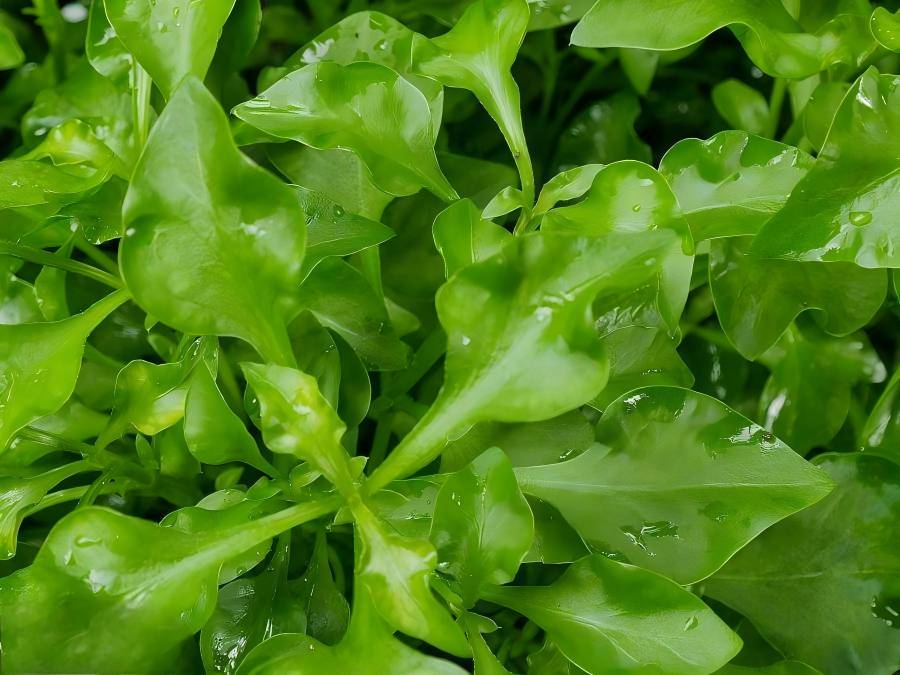Chlorophyll What Does It Do?
Chlorophyll is a natural green pigment found in plants and algae. It has been shown to have strong antioxidant, antibacterial, anticancer and antiviral effects. Chlorophyll is used as a natural and healthy coloring agent and is widely used in the food and pharmaceutical industries. Some agricultural by-products contain a lot of chlorophyll. When these by-products are not fully utilized, they are disposed of as waste, causing environmental pollution. Examples include silkworm dung, leaves and vegetable leaves. If bioactive substances can be recovered from these by-products and used in functional foods that promote health, it will enhance the value of agricultural by-products and further promote economic, ecological and social benefits.
This study reviews the existing research progress of chlorophyll and its potential applications in terms of extraction methods, antioxidant properties and anti-inflammatory activities, with the aim of providing a reference for basic research and application development of chlorophyll in the food and pharmaceutical industries.
1 Extraction methods of chlorophyll
As a natural pigment ingredient that has attracted considerable attention, processing technology may have a significant impact on the content and application of chlorophyll, thereby affecting its nutritional and commercial value. Therefore, how to efficiently extract it is the premise and basis for in-depth research and application. Many literatures have summarized the methods for extracting chlorophyll from agricultural by-products and other materials. As can be seen from Table 1, factors such as extraction method, temperature, solvent type, and material-to-liquid ratio will all have an impact on the extraction results. Changing any of these factors can increase or decrease the yield of chlorophyll. Therefore, studying the optimal extraction process conditions to obtain a high yield is of great significance for recovering chlorophyll from agricultural by-products or other raw materials.
Studies have shown that chlorophyll is sensitive to high temperatures. An appropriate extraction temperature can enhance the extraction of chlorophyll, but if the extraction temperature is too high, it will produce de-magnesium chlorophyll compounds, which will reduce the total amount of chlorophyll in the sample and cause serious losses in the color, texture and nutritional value of the product [1].
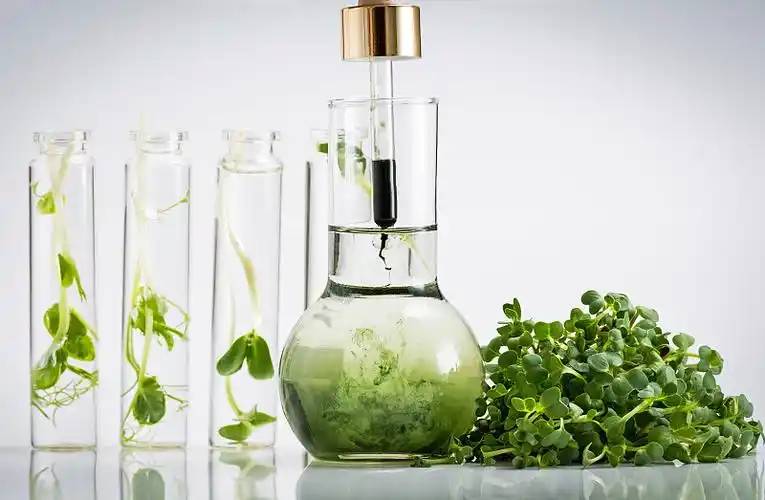
The type of solvent used can affect the extraction of chlorophyll. Organic solvents such as methanol, ethanol, acetone and dimethyl sulfoxide are commonly used to extract chlorophyll. Traditional solvent extraction mainly relies on the osmotic effect of the solvent on the cell membrane to dissolve the lipids and lipoproteins in the chloroplast membrane. It has been reported that acetone is widely used in the extraction of chlorophyll and is the best solvent for extracting chlorophyll. However, acetone is highly flammable and has an irritating effect on human skin, including adverse reactions such as headaches, nausea, vomiting, and erythema. Ethanol is known to be greener and safer than acetone, with lower volatility and flammability, making it the preferred solvent for chlorophyll extraction.
In addition, there are some pretreatments, such as shredding, grinding, ultrasound, microwave, etc., which are more conducive to the dissolution of chlorophyll in plants and improve the yield. It has been reported that grinding can increase the amount of extracted chlorophyll [2]. Chen Hui et al. [3] found that blanching with microwaves before quick-freezing broad beans resulted in a higher retention of chlorophyll. Li Canliang [4] used an acetone-ethanol mixture to extract chlorophyll from oil-rich Chlorella vulgaris cells that had been cultured with an increased nitrogen source before extraction. He found that the extraction rate could reach 53.69 mg/g. Green extraction technology involves the use of safe solvents such as ionic liquids, ethanol and glycerol, and plays an important role in the extraction of natural pigments. Wu Hao [5] used environmentally friendly extraction technology with anhydrous ethanol as the solvent and assisted supercritical CO2 extraction technology to extract high levels of chlorophyll from moso bamboo leaves.
2 Pharmacological activity of chlorophyll
Chlorophyll is an important representative of natural pigments. Its chemical structure is a key determinant of its biological activity. Understanding the relationship between the chemical structure and biological activity of chlorophyll and its derivatives is important for therapeutic properties. The core skeleton of the chemical structure of chlorophyll mainly consists of a porphyrin ring and a fatty hydrocarbon side chain. This unique chemical structure enables chlorophyll to scavenge harmful free radicals, reduce the degree of DNA damage, and exhibit various activities such as anti-oxidation, anti-inflammation, anti-obesity, and anti-tumor. The solubility, stability, and interaction ability of chlorophyll derivatives that have undergone structural modification changes have also changed, resulting in enhanced biological activity. The following is a summary and analysis of relevant research.
2.1 Anti-inflammatory and antioxidant effects
Inflammation and oxidative stress are related to the pathological mechanisms of chronic diseases and sub-health. Oxidative stress, which occurs when there is an imbalance between harmful free radicals and the body's antioxidant defenses, is related to the occurrence of neurodegenerative, cardiovascular, and diabetes diseases. Studies have shown that chlorophyll has antioxidant properties, can neutralize free radicals, reduce oxidative damage to brain cells, and thus slow the onset of neurodegenerative diseases. Other studies have found that chlorophyll can help protect endocrine organs such as the ovaries and thyroid from damage caused by endocrine disruptors.
Lanfer et al. [12] studied the antioxidant activity of natural chlorophyll and copper chlorophyll and found that the antioxidant mechanism of natural chlorophyll is based on protecting linoleic acid from oxidation or inhibiting the decomposition of hydrogen peroxide, while copper chlorophyllin has higher antioxidant activity than natural chlorophyllin. Rehni et al. [13] demonstrated that chlorophyll and its derivatives have a neuroprotective effect on mice with cerebral ischemia. They can reduce the area of cerebral infarction. By regulating the inflammatory pathway, chlorophyll may help to inhibit excessive inflammation in the brain, thereby protecting neurons from inflammatory damage. In addition, chlorophyll has been shown to have detoxifying effects in the body. Ingestion of chlorophyll can help reduce the accumulation of toxins and pollutants and their potential adverse effects on the brain and endocrine system [14]. Including foods rich in chlorophyll in the diet can help prevent or delay neurodegenerative diseases and reduce the adverse effects of endocrine disruptors on hormone balance and body health.
2.2 Anti-obesity effect
In recent years, the prevalence of obesity has increased significantly. An imbalance between energy intake and expenditure, coupled with a reduction in physical activity, is one of the main sources of obesity development. Studies have found that chlorophyll lowers free fatty acids, alters the composition of fatty acids, and reduces the uptake of fatty acids by intestinal epithelial cells.

Adding chlorophyll to the diet can help reduce weight gain, improve glucose tolerance, reduce inflammation, and have a positive effect on obesity control. Supplementing with chlorophyll-rich spinach extract can significantly reduce obesity-related inflammation levels in mice fed a high-fat diet [15]. In addition, spinach extract effectively alleviates the intestinal flora imbalance induced by high-fat diet-fed mice, and chlorophyll supplementation can regulate the diversity of the intestinal flora in mice [16]. Seo et al. [17] studied the anti-obesity and anti-browning effects of chlorophyllin-a-rich spirulina extract and found that it inhibited lipid accumulation by reducing fat production in vitro, and reduced weight gain, fat mass, and cholesterol levels. The effect of chlorophyll on diabetic rats was also studied, and it was confirmed that chlorophyll a can reduce the risk of diabetes [18].
2.3 Anti-cancer effect
Studies have shown that dietary intake of chlorophyll and its derivatives has potential anti-cancer effects against various types of cancer. Aflatoxin, a food contaminant produced by fungi, is an inducer of liver cancer cells. Application of chlorophyll derivatives to mouse liver cancer cells can enhance the activity of glutathione transferase and reduce the degree of DNA damage induced by aflatoxin in liver cells [19].
Photodynamic therapy involves a photosensitizing drug and a photosensitizing effect that produces active oxygen to kill or remodel diseased cells or tissues [20]. Phototoxicity occurs when the diseased tissue being treated is exposed to sunlight. Chlorophyll acts as a photosensitizer due to its ability to absorb light. Photodynamic therapy with chlorophyll derivatives can significantly inhibit tumor growth [21]. Huang Xixiang et al. [22] studied the in vitro photodynamic effect of pheophorbide A on tumor cells and found that it has a significant photodynamic inhibitory effect on tumor cells. In mice with cholangiocarcinoma, injection of a chlorophyll derivative and irradiation significantly inhibited tumor growth [23].
2.4 Anti-mutagenic effect
Mutagenic agents are ubiquitous in our environment and diet, and some are even used as chemotherapeutic drugs, such as cisplatin. In a study by Xu Xiaoyi [24], the chlorophyll content of vegetables was correlated with their anti-mutagenic activity. The researchers used cyclophosphamide to test the reversal of chromosomal aberrations in mice and found that chlorophyllin can effectively inhibit chromosomal aberrations [25]. Other studies on the absorption characteristics of chlorophyllin to neutron radiation have confirmed that chlorophyllin has an effective shielding effect on fast neutrons, which can reduce the damage that researchers may suffer from direct or scattered neutrons.
2.5 Other effects
Chi Cuicui et al. [26] explored the mechanism of sodium chlorophyllin in treating iron deficiency anemia in rats. The results showed that sodium chlorophyllin promoted the effect of blood replenishment by increasing hemoglobin levels, red blood cell count and hematocrit, thereby achieving the purpose of treating iron deficiency anemia. Water-soluble chlorophyll derivatives can accelerate the healing of experimental wounds and burns in animals [27]. In addition, the liver plays an important role in the metabolism and removal of endocrine-disrupting chemicals in the body, and chlorophyll can enhance the liver's detoxification of these chemicals. Qiu Weiyan et al. [28] observed the protective and therapeutic effects of iron chlorophyllin sodium prepared from silkworm dung on acute liver damage caused by D-GalN and CCl4 in mice. Preliminary experimental results showed that iron chlorophyllin sodium had a good therapeutic effect when administered preventively and immediately after acute liver damage and acute liver poisoning, promoting and accelerating the recovery of liver function.
3 Chlorophyll in health food and pharmaceuticals
Plant pigments are unique chemical substances that can replace synthetic food colorants. Green by-products are the main source of chlorophyll, and because their derivatives have important bioactive properties, such as anti-inflammatory, anticancer, and antimutagenic activities, chlorophyll is also a rich source of vitamins A, C, E, and K, as well as minerals such as iron, calcium, and magnesium. Therefore, it is used in the food, cosmetics, and pharmaceutical industries to provide coloring and promote health properties. Currently, consumer interest in healthcare has increased the market demand for safe and healthy foods, and the addition of bioactive compounds to the production of functional foods can enhance the health benefits. The use of chlorophyll to modify traditional foods can help consumers adopt a healthier diet and resist diet-related diseases. Hong Jun [29] added chlorophyll to pasta to increase its antioxidant properties and sensory evaluation. Liu et al. [30] extracted chlorophyll from grapefruit leaves to prepare a nanoemulsion, and the method used can produce highly stable chlorophyll.
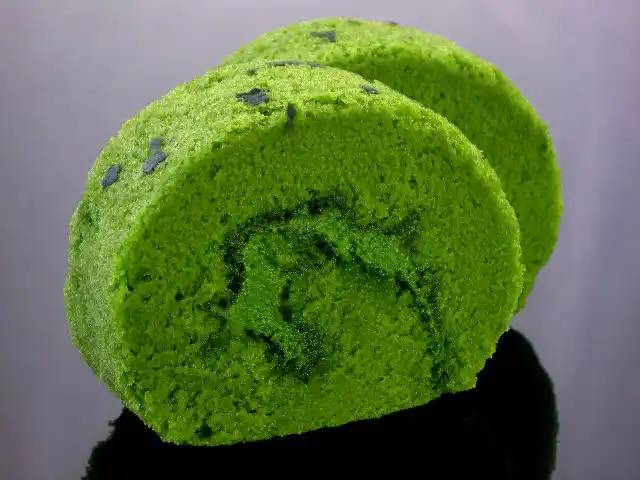
There are few reports on health foods and medicines with chlorophyll as the main ingredient. A search of the National Special Food Information Platform revealed that two chlorophyll health products have been approved, covering health functions such as assisting in the protection against chemical liver damage, relieving physical fatigue, and resisting mutations. In addition, a search of the Drug and Cosmetics Inquiry System of the National Medical Products Administration found that chlorophyll and its derivatives are used as raw materials in the preparation of some traditional Chinese medicines and cosmetics.
4 Conclusion
The recovery of chlorophyll from agricultural by-products and its use of its biological activity in food and medicine is essential for economic recycling. Based on the current research status, there are still some problems in the basic research and development and application of chlorophyll in the health food, pharmaceutical and cosmetic industries.
First, as a natural coloring agent, chlorophyll is not stable under various factors such as temperature, light, and storage conditions. It is also insoluble in water, and most of the organic reagents used in the extraction process are irritating. Therefore, it is necessary to study the stability of chlorophyll in terms of processing methods and technological innovation, focusing on the development of processing methods that use environmentally friendly reagents to enhance the solubility of chlorophyll.
Secondly, there is already some evidence that chlorophyll and its derivatives have biological activities such as anti-obesity, anti-inflammatory and anti-oxidation. However, there have been relatively few studies on their pharmacokinetics, so more experiments are needed to prove their effectiveness.
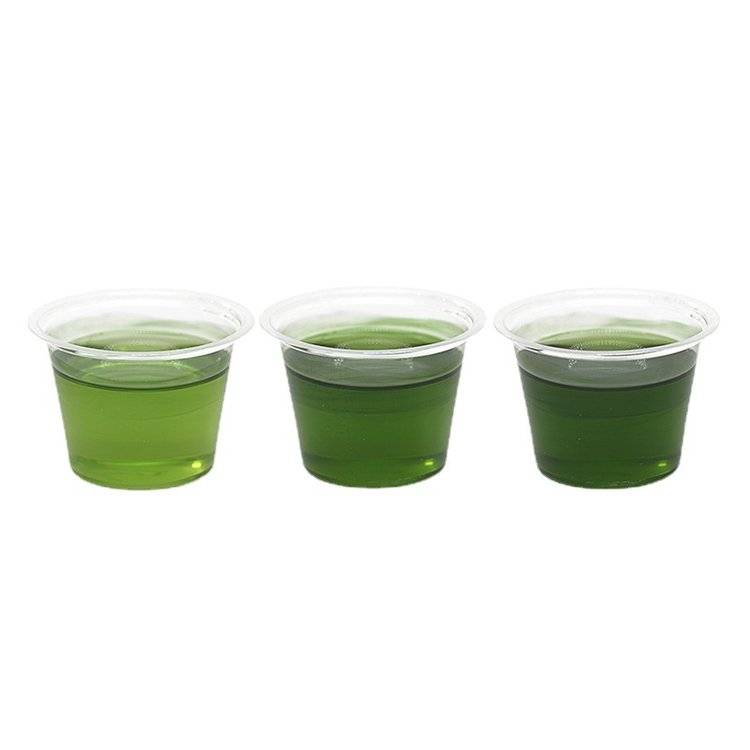
Finally, exploring new methods of recovering chlorophyll from agricultural by-products and developing health foods or special medical foods and cosmetics with it as the main ingredient based on its functional benefits has a certain scientific basis and feasibility, which can help promote economic circulation, reduce environmental pollution and waste of resources.
References
[1] Hu Yuwei, Sun Hongnan, Mu Taihua. Research progress on methods to improve the stability of chlorophyll [J]. Food Science and Technology, 2023, 48 (2): 49-55.
[2] Yang Pingping, Wang Xiulan. Comparison of three extraction methods for the determination of chlorophyll a in surface water [J]. Chemical Engineering and Equipment, 2023 (1): 223-225.
[3] Chen Hui, Tang Mingxia, Yuan Chunxin et al. Optimization of microwave blanching process for quick-frozen broad beans by response surface methodology. Journal of Zhejiang Agricultural Sciences, 2013, 25(6): 1373-1377.
[4] Li Canliang, Zhong Min, Hu Xueqiong et al. Study on the extraction of chlorophyll from oil-rich new green algae [J]. Food Industry Science and Technology, 2015, 36(4): 199-203.
[5] Wu Hao, Jin Junsu, Zhang Zeting et al. Supercritical CO2 extraction of chlorophyll from Moso bamboo leaves [J]. Journal of Beijing University of Chemical Technology (Natural Science Edition), 2007 (1): 92-94.
[6] Weng Xia, Diao Quanping. Optimization of chlorophyll extraction from wild spinach and study of its dispersion system [J]. China Food Additives, 2023, 34(6): 130-137.
[7] Li Xiang, Zhong Yali, Cao Jiangrong et al. Study on the extraction of chlorophyll from silkworm dung by microwave-assisted ultrasound [J]. Daily Chemical Industry, 2013, 43 (4): 285-289.
[8] Shen Shen, Duan Junlu, Li Yu et al. Extraction process of chlorophyll from bamboo leaves and its functional application [J]. New Chemical Materials, 2018, 46(1) : 117 -120 .
[9]Wang Q, Cui S, Yang Z. Study on the extraction of chlorophyll from saltland. Contemporary Animal Husbandry, 2017 (36) : 57-59 .
[10]Zhang H, Zhang N, Ma L et al. Optimization of the chlorophyll extraction process from barley sprouts using response surface methodology [J]. Food Science, 2014, 35 (2) : 75-80 .
[11]Shi Yue, Wang Yubin, Li Wu, et al. Study on the extraction process of chlorophyll from watermelon rinds [J]. Journal of Food Science and Technology, 2018, 36(6) : 82-87 .
[12]Lanfer-Marquez U M, Barros R M C, Sinnecker P. Antioxidant activity of chlorophylls and their derivatives[J]. Food research international, 2005, 38 (8-9) : 885-891 .
[13] Rehni A K, Pantlya H S, Shri R, et al. Effect of chlorophyll and aqueous extracts of Bacopa monniera and Valeriana wallichii on ischaemia and reperfusion-induced cerebral injury in mice[J]. 2007 .
[14] Vegetables can reduce the damage caused by aflatoxin [J]. Food and Fermentation Industry, 2010, 36(2): 131.
[15] Wang X, Ou Y, Li Y et al. Effects of chlorophyll on inflammatory markers in ob/ob mice. Chinese Journal of Food Science, 2021, 21(1): 90-95.
[16] Li Y, Cui Y, Lu F, et al. Beneficial effects of a chlorophyll-rich spinach extract supplementation on prevention of obesity and modulation of gut microbiota in high fat diet fed mice [J]. Journal of Functional Foods, 2019, 60: 103436.
[17] Seo Y J, Kim K J, Choi J, et al. Spirulina maxima extract re-duces obesity through suppression of adipogenesis and activation of browning in 3T3-L1 cells and high-fat diet-induced obese mice[J]. Nutrients, 2018, 10(6): 712.
[18]Alsuhaibani A M A, Alkehayez N M, Alshawi A H, et al. Effects of chlorophyll on body functioning and blood glucose levels[J]. Asian Journal of Clinical Nutrition, 2017, 9(2): 64-70.
[19] Hsu C Y, Chen Y H, Chao PY, et al. Naturally occurring chlorophyll derivatives inhibit aflatoxin B1-DNA adduct formation in hepatoma cells [J]. Mutation Research / Genetic Toxicology and Environmental Mutagenesis, 2008, 657 (2): 98-104.
[20] Huang Xixiang, Lv Yingnian, Qi Yi. Research progress of chlorophyll photosensitizers in photodynamic antitumor therapy [J]. Oncology Pharmacy, 2022, 12(5): 569-576.
[21]Shi H, Zhang L J, Zhang C Y, et al. Photodynamic antitumor activity of a chlorophyll derivative. Biotechnology World, 2014(12): 152-153.
[22]Huang X X, Cai X X, Wang T J, et al. Phototoxicity of demagnetized chlorophyllin A from Ulva lactuca extract on six cancer cell lines. Tumor Prevention and Treatment Research, 2022, 49 (8): 780-785.
[23] Wu Z M, Wang L, Zhu W, et al. Preparation of a chlorophyll derivative and investigation of its photodynamic activities against cholangiocarcinoma. Biomedicine & Pharmacotherapy, 2017, 92: 285-292.
[24] Xu Xiaoyi. The relationship between the anti-mutagenic activity of vegetables and their chlorophyll content [J]. Journal of Beijing Medical College, 1981 (2): 112.
[25] Wu Xiaonan, Wang Jiali. Experimental study on the anti-mutagenic effect of pea chlorophyll [J]. Food Science, 1997 (12): 43-44.
[26] Chi Cuicui, Zhai Erlin, Li Chunyan et al. Comparative study of the efficacy of sodium ferric chlorophyllin from celery and other blood tonics [J]. Food Science, 2013, 34(7): 289-292.
[27] Li Yue, Fan Junwen, Chen Zhilong. Research progress on the biological activity of chlorophyll derivatives [J]. Journal of Pharmacy Practice, 2001 (5): 266-269.
[28] Qiu Weiyan, Zhou Zhenhe, Ying Xuhua. Experimental study on the protective and therapeutic effects of silkworm dung extract-ferrous sodium chlorophyllate on acute liver injury in animals [J]. Chinese Medicine Science and Technology, 1998 (2) : 93-94 .
[29] Hong Jun, Zhang Kaifang, Li Qian, et al. Study on the extraction, stability and microcapsule preparation of chlorophyll from leeks [J]. China Food Additives, 2021, 32(9) : 66-72 .[30]Liu,M.H.; Li,Y.F.; Chen,B.-H.Preparation of Chlorophyll Nanoemulsion from Pomelo Leaves and Its Inhibition Effect on Melanoma CellsA375.Plants 2021,10,1664 .


 English
English French
French Spanish
Spanish Russian
Russian Korean
Korean Japanese
Japanese